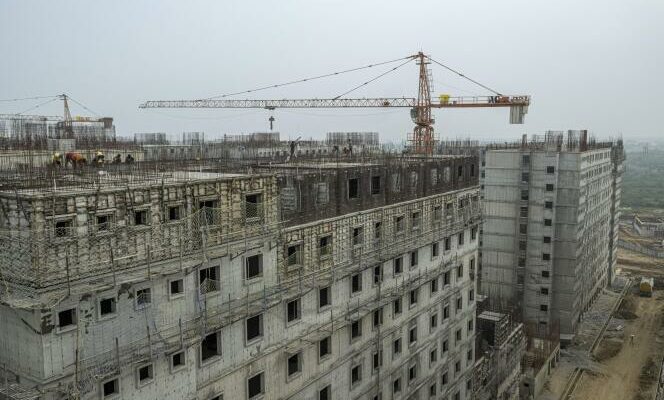Prestigious announcements are multiplying like so many trophies for India. The South Asian giant, which dreams of competing with China in global value chains, can boast of having attracted, in recent years, the biggest names in electronics. Apple now manufactures the iPhone 15 in India, Google its new Pixel 8 and Samsung its Galaxy S24. Even Elon Musk is considering setting up an electric vehicle factory there.
Apple embodies the Indian bet of a growing number of multinationals. The Apple company began assembling low-end iPhone models in India in 2017, then developed its manufacturing capabilities thanks to its Taiwanese subcontractors such as Pegatron and Wistron. From 2022, Apple shifted gears and began manufacturing its latest models, first with the iPhone 14, then with the iPhone 15. Between 12% and 14% of iPhones sold worldwide are made in India, but, by the end of 2024, a quarter of all Apple smartphones are expected to come out of Indian factories.
The arrival of these giants arouses euphoria. Middle-class Indians, government officials, movie stars and even big local bosses all display their pride in this new attraction. “I was recently at a Verizon store in the US to get a local SIM card, and I proudly informed the seller that my iPhone 15 was made in India”rejoiced Anand Mahindra, head of the Mahindra & Mahindra conglomerate, in October 2023 on the social network , he will get one.
“Make in India”
“Very often you have flagship companies that set the tone”, for his part, judged Piyush Goyal, Minister of Commerce and Industry. The latter hopes that the example of Apple will send a “strong signal” to businesses around the world. India’s smartphone exports doubled in the fiscal year, which ended in March 2023, to around $11 billion (€10.2 billion).
Prime Minister Narendra Modi’s government has a long-standing ambition to make India the world’s new factory. “I want to appeal to the whole world (…) : “Come manufacture in India” »he declared during his first speech on the occasion of Independence Day in 2014.
Barely coming to power, the Hindu nationalist had unveiled one of his flagship initiatives: the Make in India program, which aims to promote the country’s manufacturing sector and which represents only 17% of gross domestic product. The strategy notably consisted of increasing customs duties to encourage local production. Import taxes amounted, in 2022, to 18% on average. This is more than in Thailand or Vietnam, for example.
You have 58.92% of this article left to read. The rest is reserved for subscribers.
